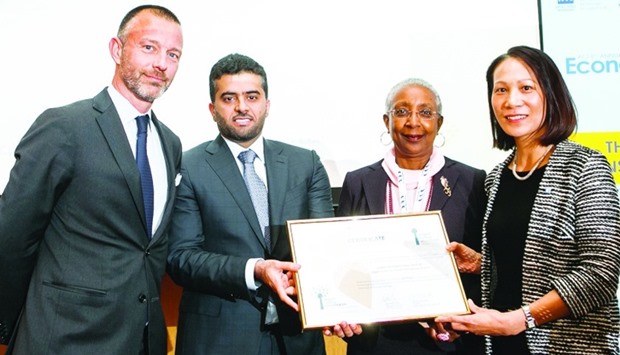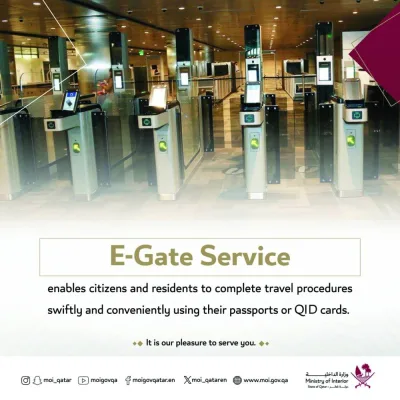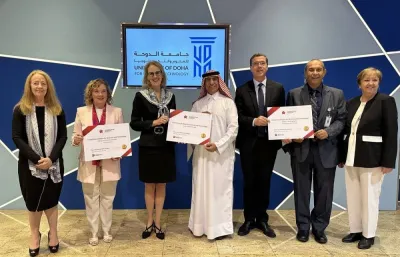“It is an acknowledgement of HIA’s commitment to tackle climate change and reduce the airport’s carbon emissions from its first day of opening in 2014,” the HIA said in a release.
The certificate was presented to HIA chief operating officer Badr Mohamed al-Meer at the ACI’s 8th Annual Airport Economics & Finance Conference & Exhibition, in London on Tuesday.
The certificate was presented to the HIA in the presence of the ACI director general, Angela Gittens; director general, ACI Europe, Olivier Jankovec and regional director, ACI Asia-Pacific, Patti Chau.
As part of the Airport Carbon Accreditation application process, the HIA’s carbon footprint was defined in line with the Greenhouse Gas Protocol and independently verified. Level one of the Airport Carbon Accreditation certification recognises airports that map their carbon emission sources within their direct control.
For the HIA, this includes its terminal, car parks, waste water facility, airport perimeter road lighting and offices. The airport footprint will form the baseline measure for future environmental airport initiatives.
Al-Meer said, “At HIA, we believe in our environmental responsibility and are committed to tackling climate change within the context of our strategy. It is in our best interest to develop a sustainable future for our airport by effectively managing the environmental impacts of our operations. Mapping our carbon footprint helps us optimise our energy demand management through new technology, continually improving operational practices and considering further investments in low carbon energy generation.”
Chau said, “I wish to congratulate Hamad International Airport on becoming Airport Carbon Accredited at the Mapping Level of the programme. This is a strong demonstration of the airport’s commitment to go the extra mile in operating the airport in an environmentally sustainable manner which is crucial for the long-term development of our industry.”



